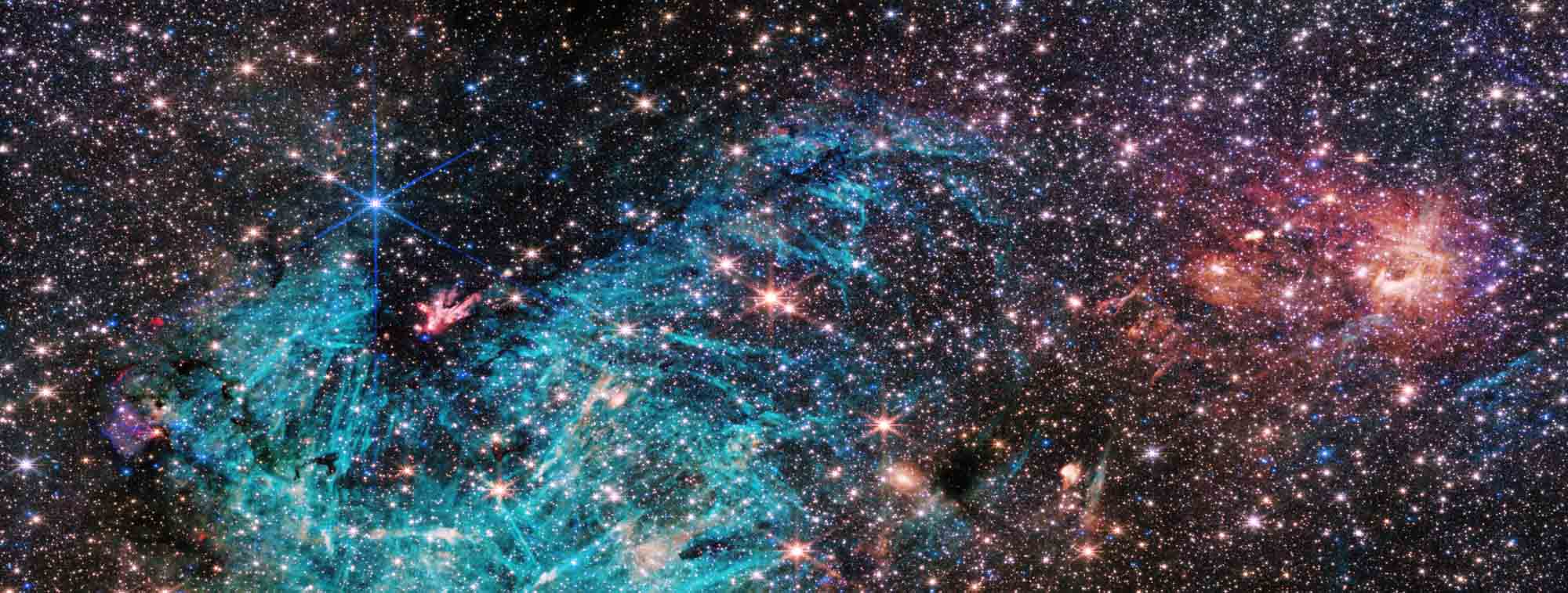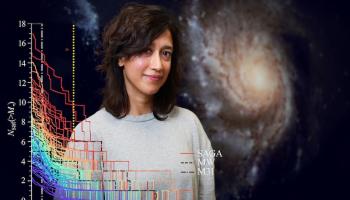Seeing Stars: Undergraduate Astronomer’s Research Leads to New Discoveries About Our Galaxy

Less than two years ago, University of Virginia student Sam Crowe became the world’s first undergraduate to lead an approved Webb Telescope General Observer project, giving him access to NASA’s $10 billion James Webb Space Telescope for his research. This spring, initial findings made by Crowe and his team of approximately 20 researchers from around the globe will appear in one of the world’s most respected astrophysics journals.
In two papers (https://iopscience.iop.org/article/10.3847/1538-4357/ad8889 and https://iopscience.iop.org/article/10.3847/1538-4357/ad9d0b) published in the peer-reviewed Astrophysical Journal, Crowe, a fourth-year majoring in both astrophysics and history, announced the results of what he has characterized as “A deep and unprecedented infrared study of star formation in the Central Molecular Zone, or CMZ.”
Time on the telescope allowed Crowe and his team to study one particular region of the CMZ, a region near the center of the Milky Way that is the site of widespread star formation: the molecular cloud known as Sagittarius C. According to Crowe, the region has the potential to provide more evidence about how stars form in the CMZ, especially massive stars measuring over eight times the mass of the sun. Massive star formation is something astronomers don’t fully understand, and it’s something Crowe has been researching while completing his undergraduate degree requirements at UVA.
Observing the star-forming cloud and its surroundings has been challenging because of the interstellar dust that makes it difficult to see the CMZ from ground-based telescopes, but NASA’s space-based James Webb telescope, launched in 2021, is able to observe infrared light waves that pass through that obstacle.
Selected by an international panel of senior astronomers from thousands of proposals, Crowe’s project gave him time to observe what he called a promising and previously inaccessible region.
“With the James Webb we can finally resolve in high detail the content of these molecular clouds in the CMZ at all stages of star formation. Accessing the CMZ at these infrared wavelengths with the James Webb telescope is key to probing fundamental astrophysical questions like how stars form and the environmental dependence of low and high mass star formation,” Crowe said.
New Insights into Star Formation and the Evolution of Galaxies
About 25,000 light years from Earth, the CMZ region is crowded and dynamic, and its extreme conditions are ideal for exploring the impact of environmental conditions on the formation of new stars.
According to Crowe, their research group has made the first clear infrared detection of protostellar outflows in the CMZ. These highly energetic flows of material thrown out by forming stars are key sources of information about the current state of a star-forming cloud and its projected future evolution.
Crowe and his team have also discovered a previously unknown star-forming region in the vicinity of Sagittarius C, as well as bright regions of filament-like emissions that are as yet unexplained. They believe these emissions, discovered in the zone of ionized hydrogen gas known as an HII region surrounding the main Sagittarius C cloud, are created by the strong magnetic fields in the CMZ. Crowe believes that this phenomenon should be present in HII regions in all environments where magnetic pressure is the predominant force, such as the centers of all galaxies and even in the early universe.

“We suggest that there’s a fundamental addition that needs to be made to the general understanding of how HII regions evolve and expand,” Crowe said. “Most of our understanding has either ignored the influence of magnetic fields or only considered magnetic fields that are relatively weak. In extreme regions like the CMZ, where you have much stronger magnetic fields, we propose that there is a fundamentally different course of evolution.”
After completing his undergraduate degrees in the spring of 2025, Crowe will continue his studies at the University of Oxford in the United Kingdom. He was recently named UVA’s latest Rhodes Scholar, and he will study for a master's degree in history of science, medicine and technology at Oxford before pursuing his doctorate in astrophysics at Caltech.
Jonathan Tan, a research professor in UVA’s Department of Astronomy said Sam’s research on massive star formation is breaking new ground by making use of world-leading astronomical facilities like the James Webb Space Telescope.
“The data he has gathered, analyzed and published is a major contribution to our understanding of this fundamental process of massive star birth,” Tan said.
Christa Acampora, Buckner W. Clay Professor of Philosophy and dean of the College and Graduate School of Arts & Sciences added, “Sam’s remarkable achievements both in the classroom and in his research are a reminder of the power of combining initiative with intellectual curiosity. I look forward to following what promises to be an outstanding career.”







